A picture, a basket, a cardboard box and a small dog... And also elderly parents and two young offspring - cars with seven seats. Nissan Pathfinder And Kia Sorento Prime with three rows of seats are designed for those who have a daily routine for the week ahead: children to school, spouse to work, grandparents to the clinic. And on the weekend friendly company to a supermarket or out of town. There are unfounded doubts that buyers of such “buses” littered with family life hardly have time to study such articles.
02.03.2015 110831 264
Comparative test Nissan Pathfinder, Hyundai Grand Santa Fe and Toyota Highlander. Three heroes
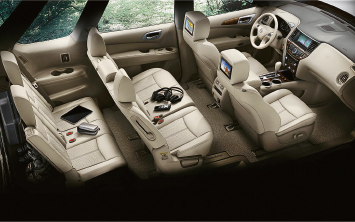 These are universal values - to load the whole family into a car and go on a trip. Big, small, it doesn't matter. The main thing is that everyone, from young to old, should be comfortable and comfortable on the road ...
These are universal values - to load the whole family into a car and go on a trip. Big, small, it doesn't matter. The main thing is that everyone, from young to old, should be comfortable and comfortable on the road ...
15.10.2014 107495 228
Test drive of the new Nissan Pathfinder. spineless
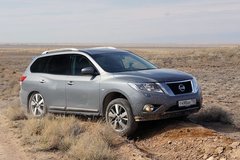 Such a car could only appear in America - with their love for big machines in general and to family cars in particular. Seven-seater crossovers (or CUVs, as the Americans themselves classify them) have been represented for several years by such models as Toyota Highlander, Honda Pilot, Mazda CX-9, and Ford Explorer and Hyundai Grand Santa Fe. But Nissan with its model came to us only now, although the new Pathfinder in America was introduced two years ago. But better late than never.
Such a car could only appear in America - with their love for big machines in general and to family cars in particular. Seven-seater crossovers (or CUVs, as the Americans themselves classify them) have been represented for several years by such models as Toyota Highlander, Honda Pilot, Mazda CX-9, and Ford Explorer and Hyundai Grand Santa Fe. But Nissan with its model came to us only now, although the new Pathfinder in America was introduced two years ago. But better late than never.
13.07.2014 125022 151
Comparison of 7-seater crossovers: CX-9, Durango, Highlander, Pilot, Santa Fe and Pathfinder
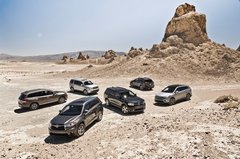 We've rounded up six of the most popular CUV contestants and put up a fierce battle. The rules were as follows: the base cost of each specific model with the selected trim level should not exceed $40,000, this amount can only be increased by optional equipment. The car must have three rows of seats, a V6 engine and a system all-wheel drive.
We've rounded up six of the most popular CUV contestants and put up a fierce battle. The rules were as follows: the base cost of each specific model with the selected trim level should not exceed $40,000, this amount can only be increased by optional equipment. The car must have three rows of seats, a V6 engine and a system all-wheel drive.
28.12.2012 84867 150
Test drive of the new generation Nissan Pathfinder with a monocoque body
 “I remember the time when the Pathfinder was a brutal SUV,” says a passenger on front seat sitting at a considerable distance from us in the Nissan Pathfinder Platinum. "Indeed? - we answer. “Have you ever seen off the road a Pathfinder released after 1995?” "Hmm, probably not." Our passenger is a great guy, lover of pets and old Land cruiser. But the Nissan Pathfinder needs no eulogy.
“I remember the time when the Pathfinder was a brutal SUV,” says a passenger on front seat sitting at a considerable distance from us in the Nissan Pathfinder Platinum. "Indeed? - we answer. “Have you ever seen off the road a Pathfinder released after 1995?” "Hmm, probably not." Our passenger is a great guy, lover of pets and old Land cruiser. But the Nissan Pathfinder needs no eulogy.
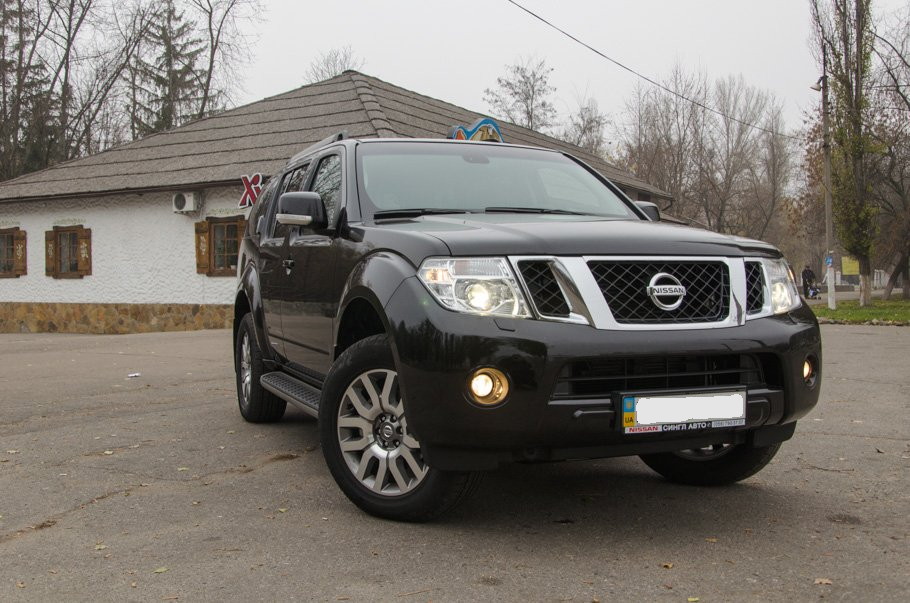
Driving performance
First of all, after I got Pathfinder for a test drive, I went home to Kremenchug - along those very Ukrainian asphalt roads that only the lazy did not scold. And I was pleasantly surprised - a frame SUV weighing 2.2 tons turned out to be very stable at speeds of 100-150 km / h. The spring suspension on double wishbones is set up perfectly - soft enough, but at the same time the car does not talk, the back does not rearrange, it steers easily - almost like a sedan. Banks are acceptable, you can enter long turns at 100 km / h, the trajectory holds perfectly, you don’t even need to steer, thanks to ESP. The power steering allows you to feel the profile of the road, which is a plus in handling, but a minus in the pits and bumps that are also felt on the steering wheel. But here's what's interesting - the steering wheel twitches from hits on the wheels, but at the same time Pathfinder does not go astray - it rushes through the pits, like on rails (the photos are not mine, but this is how our roads look like):
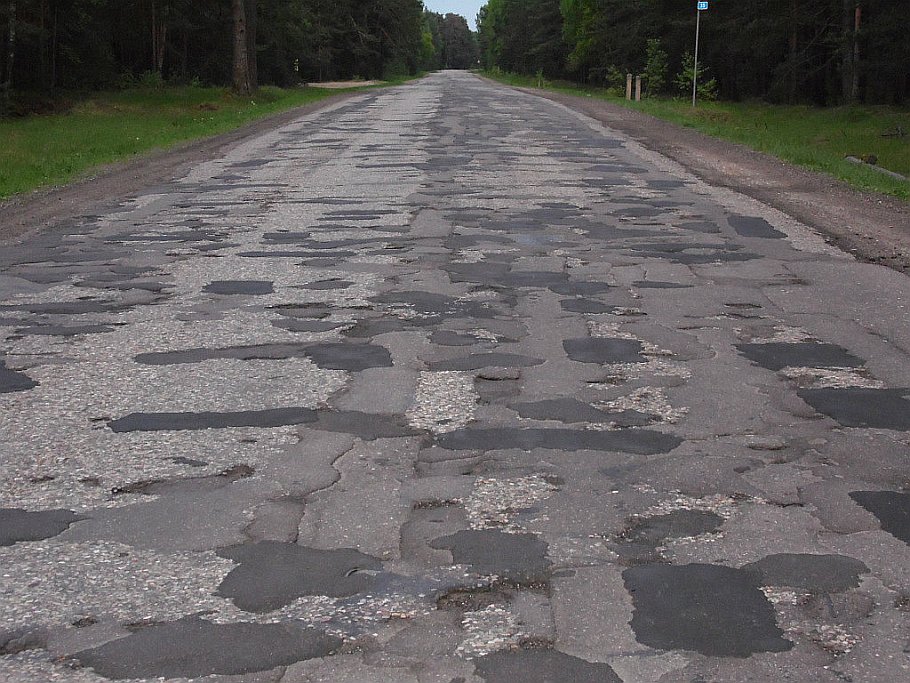
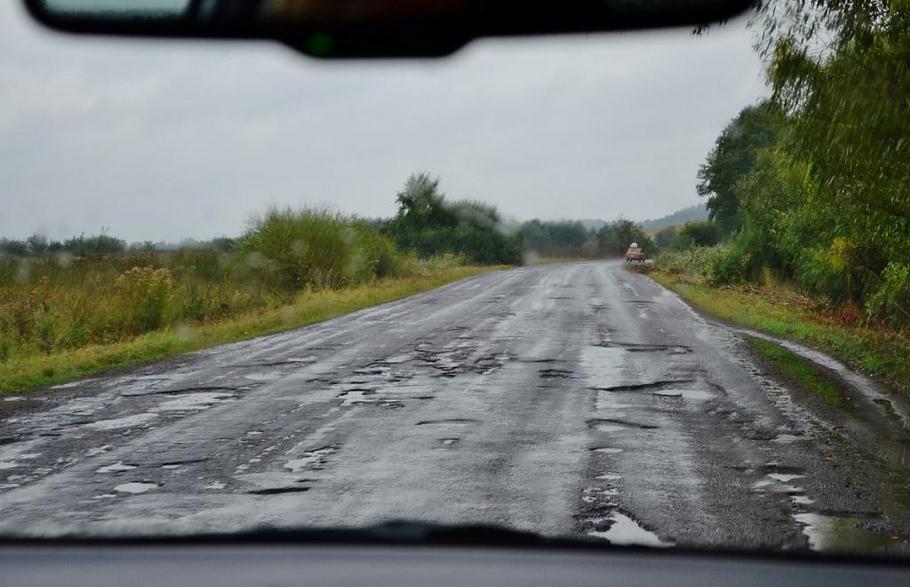
With the exception of steering wheel vibrations, the bumps and pits that previously plagued me and my Mazda 626 suddenly "disappeared" - like speed bumps in cities. You can hear the drumming of 18″ wheels, the interior sways slightly, and that's it. The suspension did not make its way either on ski jumps or on deep pits - of course it is worth going around them, but smaller pits can simply be ignored. The only problem the suspension does not cope with is a medium-sized comb - the shock absorbers do not have time to calm the vibrations of the wheels, when a new blow arrives immediately and as a result the car begins to vibrate and stagger to the beat of the combs (while not losing its course). A protracted multi-kilometer comb is not so common, so this disadvantage can be neglected. Well, or spend money on springs with progressive winding.
The engine was also a pleasant surprise. Not the coolest turbo diesel in the world is installed on the Pathfinder - 2.5 liters, 190 hp, 450 Nm (at 2000 rpm). But according to my feelings, for two and a half tons (the Pathfinder with passengers will weigh about that much), this engine in combination with a five-speed automatic is just enough. You can quickly start from a place (10.7 seconds to hundreds), you can slowly drag yourself in traffic jams, but still the city is not a native element for the Pathfinder. The fact is that the turbine is fully connected after 2000 revolutions, and before that the engine rumbles completely like a tractor and pulls not very briskly. Of course, nothing prevents you from “stomping” and spinning the engine, but in the city you have to do this too often, dropping the gear every time and scaring pedestrians with a powerful roar. But on the highway, the opposite is true: maintaining a constant speed and overtaking, accelerating from 90 to 140 km / h is a sweet thing :) The traction is locomotive, and the engine does not make any noise at all, there is silence in the cabin - you can hear a little wheel, the wind, but not the engine. For this, thanks must be said to the good sound insulation of Pathfinder.
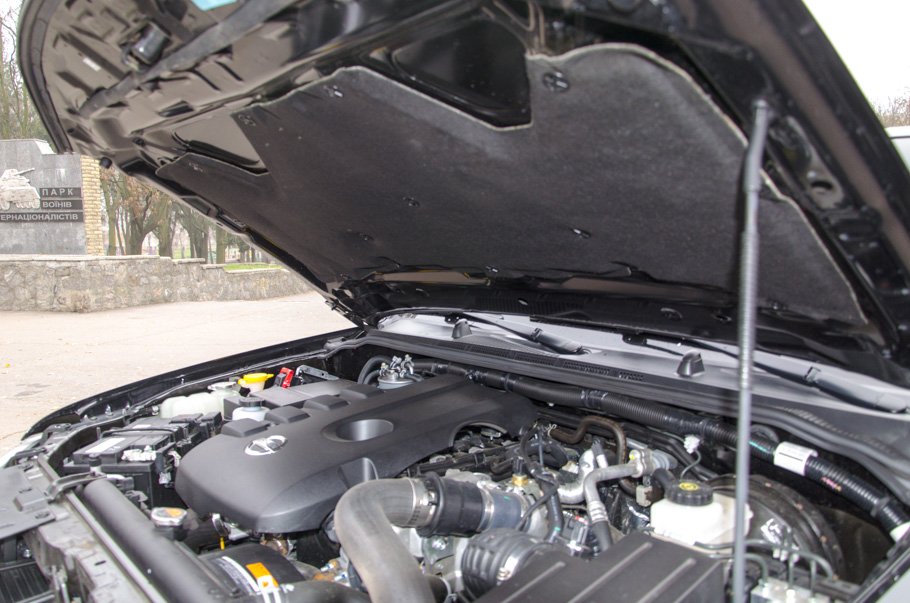
So, this whole big, heavy, but rather frisky colossus consumes only 10.5 liters of diesel fuel per 100 km in mixed mode. And if you do not recklessly, then even less. Checkmate, petrol lines :)
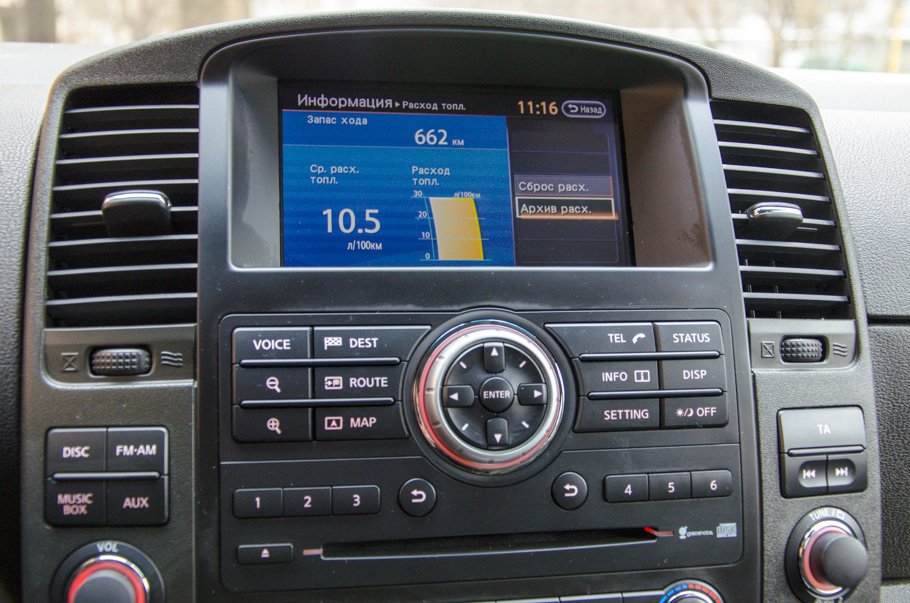
With a tank of 80 liters, the range is 800 km, so getting to a normal gas station is not a problem, especially since WOG, OKKO and Shell networks cover the whole of Ukraine. Taking this opportunity, I wound a couple of thousand kilometers on the Pathfinder and good roads(Kyiv-Kharkov), and bad ones (Kyiv-Kremenchug-Dnepropetrovsk) — the best impressions. The seats are quite comfortable, the back does not hurt, it is easy to steer — you do not get tired. On one of the trips, the trunk was filled to the brim with things, and the passenger compartment - I did not feel the difference in dynamics and suspension.
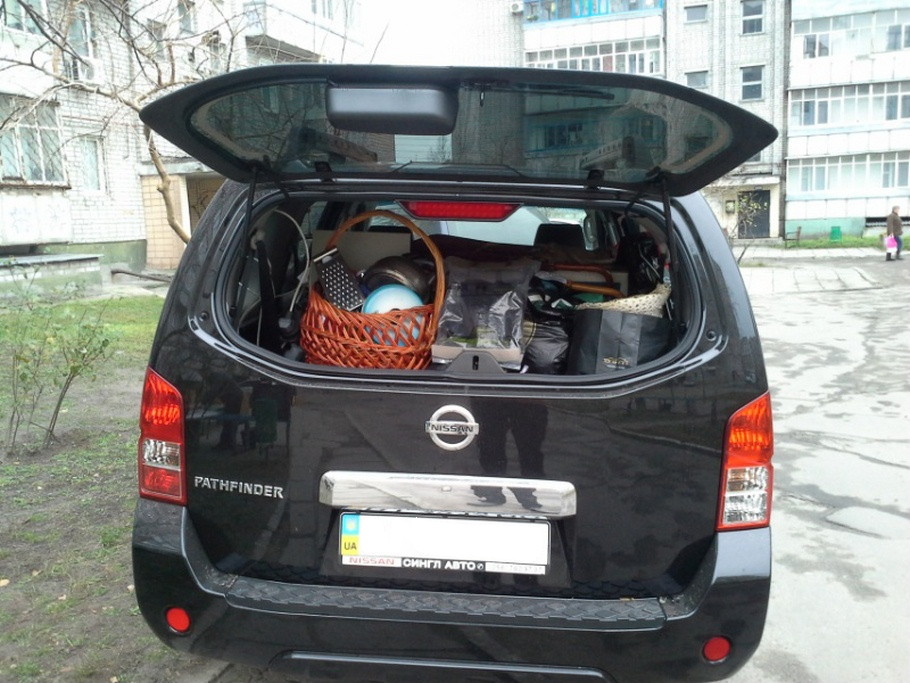
Conclusion: Nissan Pathfinder is a car for long trips, a strong and comfortable family station wagon, but unlike gentle and low-sitting minivans, Pathfinder is simply made for our shitty roads.
But, as it turned out, not only for this :)
To jeep or not to jeep?
By default, the top-end 2.5-liter Pathfinder is equipped with M + S road tires on 18″ rims, on which there is no point in getting into the mud. However, the network is full of reports of craftsmen who expand the arches and install 30 ″ wheels with lugs, on which the Pathfinder rushes like a tractor :) Fortunately, the frame, powerful diesel, all-wheel drive, transfer case with downshift and locking available from the factory - Pathfinder is built on the same platform as the Nissan Navara.
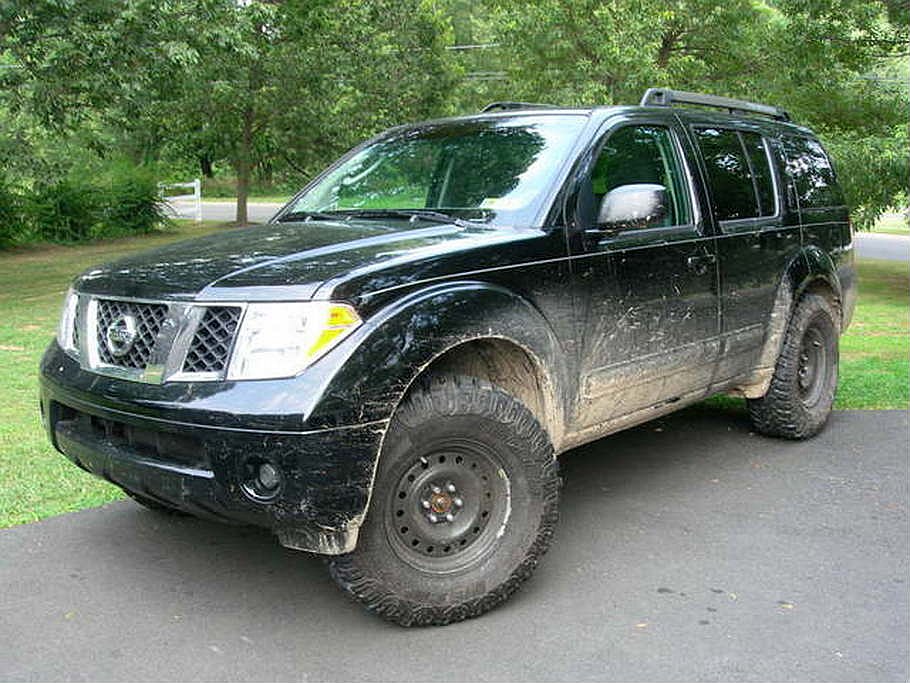
(this photo is not mine)
I have not yet tested the off-road qualities of the Pathfinder, I will shoot a video later. But him weak spots obvious: with an automatic gearbox it is more difficult to “build up”, short moves independent suspension quickly lead to diagonal hanging, and a small clearance (218 mm), high weight (curb 2.2t) and a long wheelbase make it easier to sit on the belly. But everything power units hidden in a frame and covered with protection, so there is nothing to cling to the ground.
![]()
(this photo is not mine)
Strengths are also obvious. Firstly, a frame that allows the car to withstand serious off-road loads. Secondly, 450 Nm of torque and a 2.596 ratio reduction gear that allows you to climb a steep hill literally idling. Thirdly, honest four-wheel drive and locks. This is how he can:
That is, we still have real SUV, but with lighter marketing positioning as an "all-terrain vehicle". And this is quite justified - after all, it is known that most SUVs spend 99% of their time on asphalt, 1% on a primer, and they don’t get into real shit, because it’s a pity for the car :) The question is - why do they buy them in this case? ..
Well, firstly, the status, which plays a role in the ex-USSR. Secondly, disgusting roads that need reinforced suspension and ground clearance of more than 200 mm. And thirdly, off-road capabilities are like a gun in your pocket: if you never need it, it’s good, but if you suddenly need it, it’s better to have it. Moreover, it is not necessary to drive on asphalt on tractor tires while waiting for an off-road moment; for most cases, snow chains are enough, which are carried in the trunk and mounted on road wheels in 10 minutes. Sometimes it's even better than big wheels.
Thus, by default, the Nissan Pathfinder is perfect for outings in nature with a large company (I remind you that it has a seven-seater), and after some modifications it can be used as a full-fledged SUV.
In the following posts I will talk about the interior, exterior, electronic and mechanical stuffing of the Pathfinder. There are also many surprises, though not always pleasant ones. Don't switch
Only a few of the current "spineless", or rather, frameless SUVs are still able to really knead the dirt. range rover(even if no one ever kneads anything on it), Mitsubishi Pajero and land Rover Discovery(they have a frame integrated into the body), Jeep Grand Cherokee (it never had a frame). The rest, frankly speaking, have turned into bumpkins, that is, simply into big station wagons with a primitive all-wheel drive transmission. A prime example of this is the Ford Explorer.
The same fate befell the new Nissan Pathfinder, fourth generation. This "Pathfinder" ("Pathfinder" in English translation) is technically nothing more than a copy of the Infiniti QX60 (former JX35), which I tested on the roads of Hungary last year ("Automobiles" No. 6/2013). At the heart of the car is the stretched platform of the Murano crossover with a base increased by 7.5 cm and flattened for comfort on the 3rd row of seats. fuel tank. And Murano, in turn, is a direct relative of Teana.

New CVT Jatco CVT8
In this photo, a bull variator with a torque converter for the version with V6.
The chain variator used on the Pathfinder can transmit up to 380 Nm of torque. Belt (on Teana 2.5) - up to 250 Nm. Recycled 300 out of 500 parts. Reduced friction losses, resulting in a 10% reduction in fuel consumption.
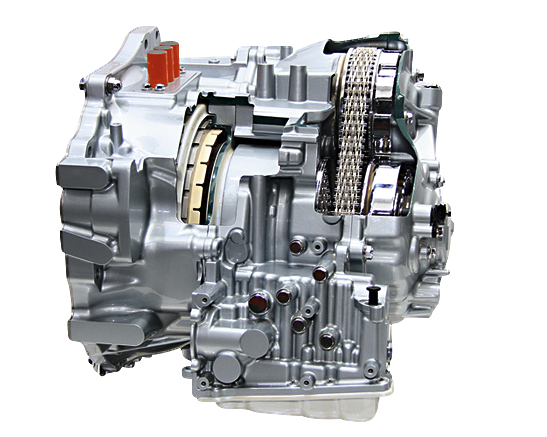
hybrid variator,
in which an electric motor is built in instead of a torque converter. IN USA Nissan already recalled 3065 Pathfinders due to risk of leakage transmission fluid from the CVT, and judging by the American forums, some Pathfinder owners experience vibrations with slight acceleration
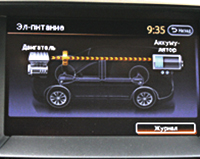
hybrid transmission
Lithium ion traction battery manufactured by the American branch of Hitachi has a voltage of 144 V, a very small capacity of 0.6 kWh and is located under the seats of the 3rd row, without reducing the volume of the trunk. An electric motor (20 hp) is built into the Jatco V-chain variator. It is located in place of the torque converter, that is, after the internal combustion engine, but before the variator pulleys.
So the press release attempts to convince me that the new Pathfinder sacredly keeps the traditions of the previous one are in vain. Dismiss! Reducing gear versus its absence, excellent geometric cross-country ability with a clearance of 21 cm and entry / exit angles of 30 ° / 26 ° vs. in a circle" against the "MacPherson" / "multi-link" front / rear, and finally, a high-torque turbodiesel against gasoline engines. In general, the new Pathfinder is suitable only for climbing curbs and the last kilometer of a trip to the country.

Interior architecture repeats the Infiniti QX60, but the center console is made flatter. The materials are of high quality, and all keys are pressed with a pleasant elasticity.
It is no coincidence that on the way to the canyon in a barely noticeable rut, along which a sedan would boldly rush Datsun on-DO, I keep hearing the Pathfinder scratching the bottom. And diagonal hanging instantly disarms it even with a forcibly locked interaxle clutch - there is no imitation of interwheel locks, or it simply cannot cope. But you can take more potatoes from the dacha: the Pathfinder has become longer by almost 20 cm and wider by 11 cm.

Monitors for rear passengers
only available in top version"Pathfinder" - from 2,157,000 rubles. Comes with a pair of wireless headphones and a remote
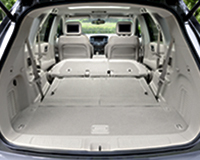
Huge trunk
Even with the 3rd row seats raised, the volume of the compartment is 453 liters. When the 3rd row is folded, the trunk holds 1353 liters, and if both the 2nd and 3rd rows are folded, then the volume increases to 2260 liters!

4WD Pathfinder
The usual scheme for crossovers with a transverse engine: the front final drive is docked with an additional angular gearbox, through which the moment goes to the cardan shaft.
"Kardan" transfers traction to the rear main gear with an interaxle multi-plate clutch manufactured by the English company GKN. The clutch is blocked by an electromagnet. There are three transmission modes: 2WD - front-wheel drive, Auto- automatic connection rear axle, Lock – forced locking of the clutch. Pathfinder can't cope with diagonal hanging even in Lock mode.
Comfort, space and silence reign in the cabin. At a speed of 140 km / h, you can talk in a whisper. Differences from the Infiniti QX60 are in the details. The front panel on the passenger side and the central tunnel are simpler molded, the center console has a different arrangement of buttons (for example, the climate control unit has moved lower and received “twists” instead of keys), the woodgrain inserts look less luxurious, and the washer of the motor / variator modes on the tunnel has been replaced with all-wheel drive control washer.
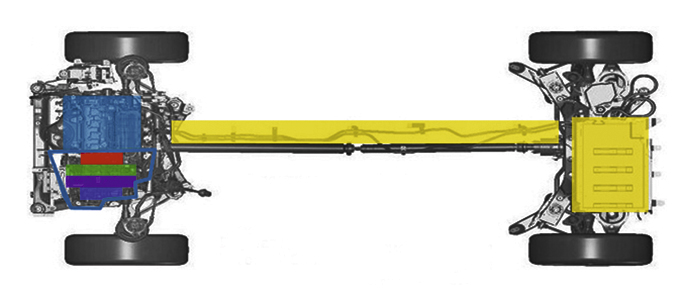
Variable speed drive
ICE (works on the Atkinson cycle)
dry clutch
electric motor
Planetary gear forward/reverse
CVT pulleys
Wiring
Lithium ion battery
The sofa of the 2nd row can be completely or in parts (40/60) moved in the longitudinal direction or folded. True, under it is an unusually high floor, and the knees are turned up. Getting to the 3rd row is easy - just pull the lever on the back of the 2nd row seat. With a height of 182 cm, I can sit everywhere with space: both at the wheel, and in the gallery, and in the middle. Great! But why in a car with a price of 1.9 million rubles. auto mode only the driver's window has it, but there are no xenon headlights even in the top version?

How to distinguish a hybrid? Aside from the badges, the only external difference between the V6 version and the hybrid (pictured) is the different rear lights. On the hybrid Pathfinder, they are LED and have a white stripe that “cuts through” the red element.
The powerplant on the Pathfinder comes in two variants. First: the "all-Nissan" VQ35DE - a 3.5-liter naturally aspirated V6 with a capacity of 249 hp. from. (325 Nm), well known from Teana and Murano. It is docked with an updated Jatco CVT8 variator, and not a belt one, as is the case with 4-cylinder engines, but a chain one.
These two are a great couple! The high-torque motor hums pleasantly and easily copes with a 2-ton crossover even with modest gas pressures, and the CVT provides a smooth start from a standstill (thanks to the torque converter) and perfectly imitates the “automatic”. And how vividly Pathfinder follows the accelerator in sport mode! The second option is a hybrid symbiosis of the “four” with a volume of 2.5 liters with a drive compressor (234 hp / 330 Nm) and an electric motor with a return of 20 liters. with., built into the variator in place of the torque converter.

Second and third row of seats. On the 2nd row (pictured above), heating is already in the basic configuration. On the "gallery" there are cup holders and air ducts of the ventilation system

7-seater saloon. The sofa of the second row is divided in a ratio of 40/60, and each of the parts can be folded or shifted in the longitudinal direction by 14 cm. The 3rd row is divided 50/50 and has no longitudinal adjustment
The total power, respectively, is 254 liters. from. - 5 "horses" more than the V6 version, and there are almost no differences in dynamics, despite the additional 100 kg of "electricity". In theory, by disengaging the clutch built between the internal combustion engine and the electric motor-variator bundle, the car can only start on electric traction or turn off the internal combustion engine while driving. But in fact, most of the time combined traction is used. And at the traffic lights, the second clutch built-in between the electric motor and the variator pulleys opens, and the internal combustion engine, rotating the electric motor, turned into a generator, recharges the compact battery (more in the cut).
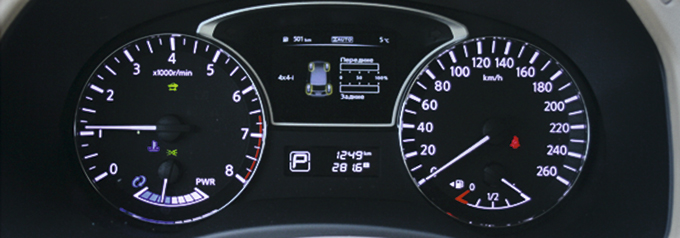
With active acceleration, the electric hum is too frank. And since it is not the torque converter that is responsible for starting from a place, but the second clutch, it is not so convenient to “crawl” in a traffic jam. In general, my choice is V6! But only if there is smooth asphalt under the wheels, with a maximum of long longitudinal waves. Then Pathfinder will rock them lullingly (sometimes unnecessarily). On the broken asphalt of Kazakhstan (no better than in the Russian provinces), the body is very vibroloaded. From 20-inch wheels, every detail of the canvas comes into the cabin. And it's not even about the size of the disks - they don't rumble - it's about the overall configuration of the chassis.
You get tired of the vibration background, at cruising speed you have to correct the course with an empty steering wheel, and in an arc the car generally jumps off the trajectory. M-yes ... Disorder! Let the Hyundai Grand Santa Fe ride just as sloppy, but the Toyota Highlander is who the role model is. Therefore, if you like to travel across our Motherland to the "long distance", Pathfinder is unlikely to the best choice. And as a spacious family car for the city and cottages, it is very good. New Pathfinders for Russian market produced in a full cycle at a plant near St. Petersburg, including hybrids - for the first time in the practice of domestic local assembly.
Nissan Pathfinder has become different - another one frame SUV less, but the market demands it. It is a pity that this is no longer a real Pathfinder, but simply a 7-seater Murano.
›Nissan test drive Pathfinder: Friend, you have the wrong class
I bet that you have a dozen things at home that you have no idea about. No, I'm not talking about the garbage under the closet, but about all the rubbish that was bought and safely forgotten. For example, for sure, there is a pair of dumbbells under the bed. Choosing them in the sporting goods department, there was one hundred percent confidence in the need for these items. For the first two weeks they were even used for their intended purpose, but then they migrated forever into the realm of oblivion.
Or maybe a pancake that seemed such a bargain that you can't even remember when it was last taken out. And there are dozens of such items: slimming massagers, a beautiful set of dishes, things from the sale, tutorials in other languages that you so dreamed of learning, jump ropes, after all.
All this rubbish, the discovery of which is accompanied by the phrase “Wow, I forgot that I have this,” has one thing in common - they are useless, absolutely and utterly. And the list of such items has grown. new Nissan Pathfinder. True, unlike dumbbells, it will not become overgrown with a layer of dust, since it is still a car and you will have to move around on it.

I liked the last generation Pathfinder, before the restyling was carried out. Yes, he had flaws, and yet he was a real frame SUV with the right all-wheel drive. And big enough ground clearance 238 millimeters and a bunch of stuff like a differential lock, allowed you to safely move off the road and storm the fields. Other than that, he looked good too.
And what is in front of us now? Fattened to an unimaginable size Terrano or Qashqai? Okay, I try not to pay attention to looks, because what I don't like may be ideal for someone else. And, nevertheless, from a brutal car, the car turned into a big hamburger with wheels.
According to the papers, the new Pathfinder is assigned to the ranks of crossovers. But for just one ground clearance, I'd already send it to minivans. How could a car whose name translates as "pathfinder" be lowered to 181 millimeters? It seems that the creators of the fourth generation painstakingly collected the most best qualities, which an SUV should own, and then someone decided that it was better to do everything exactly the opposite.
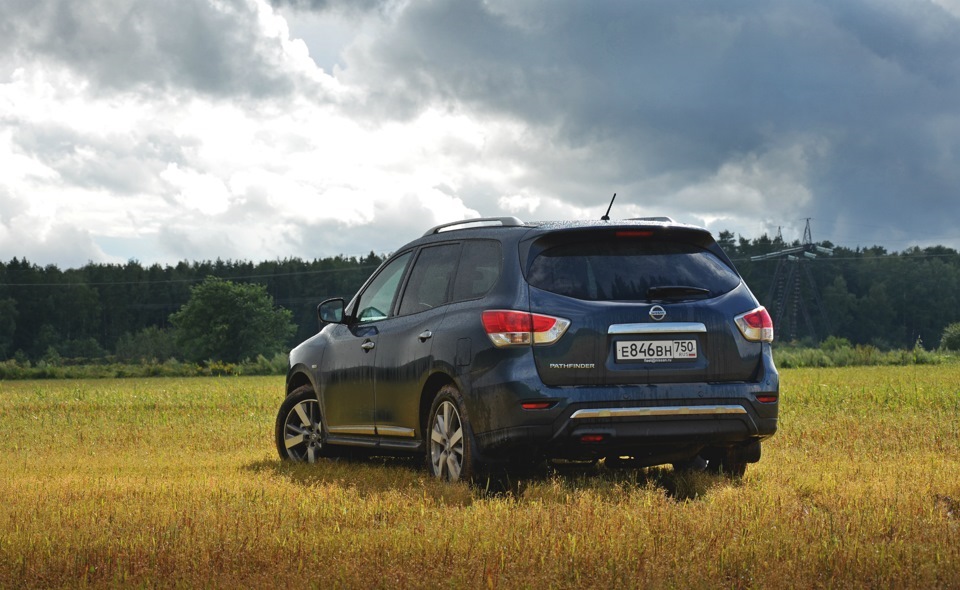
It can be assumed, purely theoretically, that the understatement should benefit the car's handling, but no matter how. A trolley with an independent multi-link front and rear is so soft that you can’t even call it jellied meat. Yes, on the one hand, it easily swallows all the bumps, keeping the driver and passengers in complete peace. Here, however, we still have to pay tribute to good sound insulation. But still, in cases where you have to turn, slow down and accelerate (the creators apparently forgot about such trifles), she still needs to look for equals. Pathfinder is like a jelly swaying from side to side. Stocking up on motion sickness pills is not a bad idea.
Despite all its softness and smoothness, the crossover reaches the mark of 100 on the speedometer in 8.5 seconds. The maximum speed is 190 kilometers per hour. Thanks to the gasoline 3.5-liter naturally aspirated V6 derated to 249 forces 325 Nm of torque. Paired with the motor is a variator. Fuel consumption within reason. When you actively press the "slippers", the engine eats about 20 liters of 95th per 100 kilometers.

By the way, Pathfinder is also available with a hybrid installation. It does not have as many differences as it might seem: more torque, less consumption, and, in general, the hybrid is a little heavier. But for diesel fans, I have bad news. Motors, on "heavy fuel", alas, no longer have a crossover.
Together with diesel units disappeared from the "pathfinder" and permanent four-wheel drive. Now the Pathfinder is equipped with the same system as the smaller ones in the line - a permanent front with a plug-in rear. True, not only does it connect only at speeds up to 40 kilometers per hour, but also the clutch does not withstand heavy loads. Thank you for not burning out.

Climbing off-road on the new Pathfinder? Better not worth it. It's not his anymore. I had the opportunity to see the helplessness of the crossover when I drove into a field in the near suburbs. They wanted to arrange a beautiful photo session, but in the end, they dug out a car from clay all day long. Both the crossover itself and its tires were clearly not ready for such tests. With the same success, you can ride a skateboard in the mud. That's another job.
But the opportunity presented itself to check the operation of the all-wheel drive system. More precisely, the lack of work as such. How beautifully everything was shown in advertising: the system recognizes that the wheel has lost traction and transfers all traction to other wheels ... In reality, those two wheels that were firmly on the ground did not even think to move, even if you hit the floor with the gas pedal. But those that sagged, splashed pretty well in the mud bath.

No, I am convinced once again that the new Pathfinder is clearly in the wrong class. His current high is conquering the curbs of the urban jungle. But if, nevertheless, there is an irresistible desire to try fate, then it is better to do it at a decent speed, without slowing down the gas and with the motto come what may. Only in this way (after we were pulled out by a cable) did I manage to overcome the ill-fated puddle several times. True, who knows what kind of danger to the chassis can lurk under the mud when you fly into it at full speed ...
